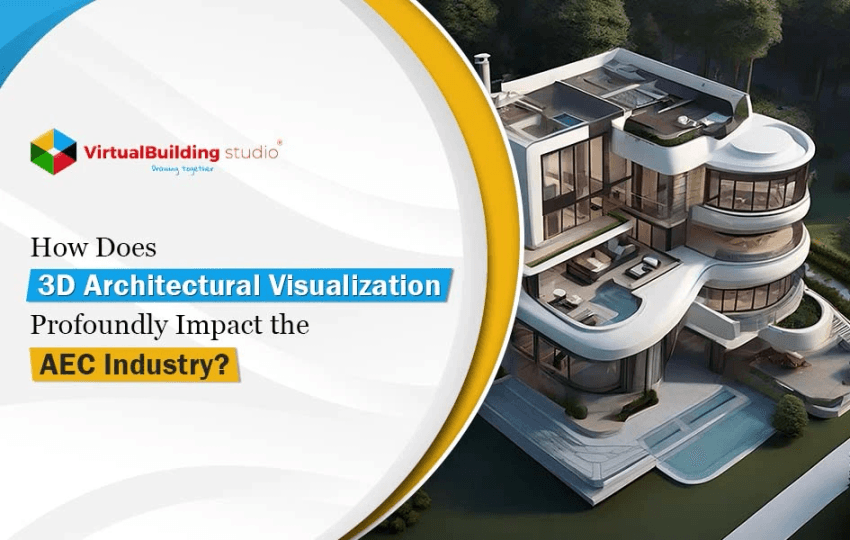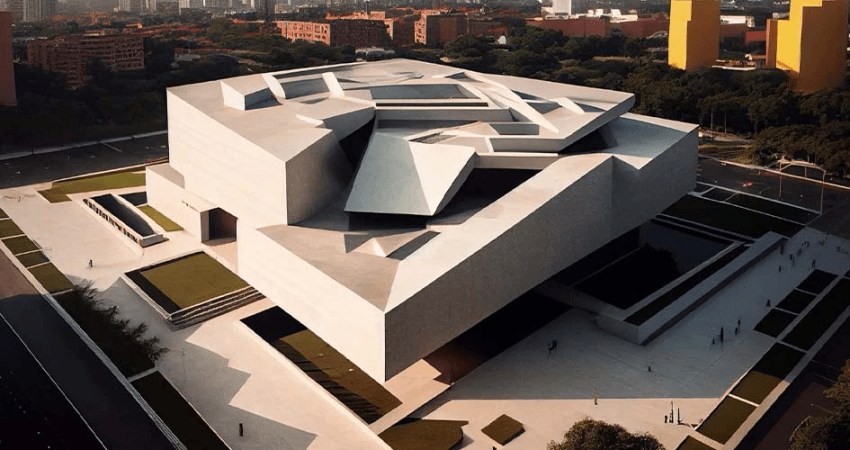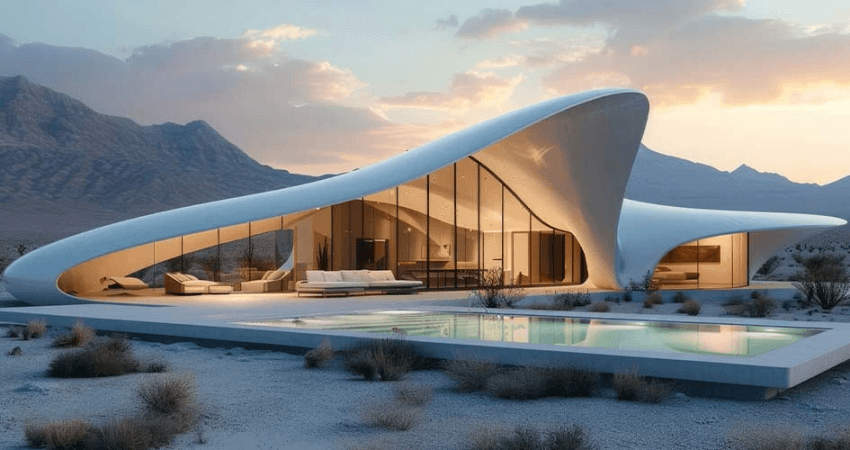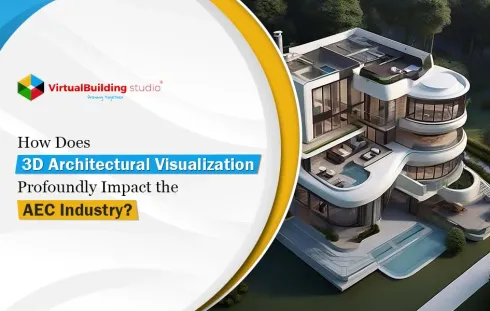
The construction industry is witnessing profound growth in the building technology domain with techniques that gracefully convey the design intent and project scope. The AEC professionals wouldn’t have imagined the possibility of being able to experience a building in a three-dimensional visual space before it’s even constructed on-site.
Not only do 3D rendering services enable the designers to generate project renders, but provide unbelievable image quality making them nothing less than photorealistic.
The AEC Companies can adopt 3D rendering services to expedite growth and take advantage of various benefits of these services.
What is 3D Architectural Visualization?
3D Architectural Visualization is a process of creating 3D BIM building models of the building’s interior and exterior from every possible perspective, unfolding every unique project feature.

The illustrative and abstract possibilities eliminate uncertainty and allow informed decision-making before the construction process starts. Visualization of a project helps in making accurate material choices, deciding on appropriate construction technology, and minimizing costs and time spent.
A crucial factor in achieving realistic renders with detailed design nuances is the Level of Detail that allows for the creation of pieces of art from the real world. In the past years, 3D visualization was restricted due to technological limitations, resulting in artificial and less-detailed 3D renders.
With the evolution of visualization software, designers can add multiple features to the project model, adding depth and detail to the final renders.
Software Used for 3D Architectural Visualization
The software serves as the backbone of the architectural visualization services for transforming 2D blueprints into accomplished projects. These computer programs act as powerful tools for designers to create advanced project renders.
However, using these software can be expensive for the AEC companies, which makes it beneficial to adopt 3D rendering services, eliminating the need to purchase costly software. Some of the popularly used 3D architectural visualization software are:
- V-Ray
- Lumion
- Autodesk Revit
- Maxwell Render
- Octane Render
- Blender
- SolidWorks
File Types Used for 3D Architectural Visualization
With a range of software comes various file formats created on different software, a few of which are interoperable and others require conversion. Some software have proprietary files that can only be used and viewed on that particular software and others are vendor-neutral file types.
Opting for suitable software while choosing 3D rendering services is a crucial decision as it can impact the project visualization results. Some of the common rendering file types are:
- DWG (AutoCAD/Autodesk Revit)
- 3DS (3DS Max)
- STL (Neutral)
- BLEND (Neutral)
- VRML/X3D (Neutral)
- COLLADA (Neutral)
- IGES (Neutral)
- STEP (Neutral)
Benefits of 3D Architectural Visualization
In today’s scenario, every design firm is consciously willing to develop project models that communicate the design intent clearly and provide detailed insights about the project.

The right set of information not only enhances project growth but also the project work is not hampered due to data unavailability.
The new approaches to architectural visualization are constantly pushing boundaries to create new experiences and better design quality. Let’s explore how 3D architectural visualization is beneficial for the AEC industry.
With Enhanced Product Quality Comes a Large Range of Clientele
The AEC industry constantly aims to attract new clients and work on fresh design perspectives for their future projects. It is preferable to present designs in an easy-to-absorb format that explicitly communicates the design language to the clientele. What is a better way to do this other than developing realistic 3D renders?
A lesser-known and interesting fact behind the rising popularity of 3D renders is how the clients respond to these renders.
Did you know that the human brain reacts positively to curves and gentle lines? For this very reason, presenting an architectural model is a preferable choice made by architects instead of providing 2D blueprints.
2D plans are more technical and difficult to decode for a non-technical person, while 3D renders generate interest and are eye-pleasing, attracting a wide range of clients.
Immediate Response to the Design Changes
Introducing 3D rendering services to your projects significantly benefits in making quick design changes and necessary updates in real time. If a company chooses to employ traditional photography-based methods for design communication, the process of making amendments at any point can be time-consuming and lengthy.
Do you have enough time to re-execute an already long process multiple times to keep the design photos up-to-date?
The time constraints and strict project deadlines will not comply with such long and tedious processes, making 3D rendering services a suitable choice for AEC professionals.
A 3D model allows us to make instant design changes to the original file and automatically update the final results, inducing design flexibility and saving time.
Privilege of Choosing from Multiple Design Options
Having options is always a satisfying and preferable choice for the clientele, as it presents different design perspectives in front of them and makes it easier for them to make a decision.
Multiple design iterations provide different design layouts, material choices, color schemes, and furnishings to the client, for opting as per their requirements.
The designers can bring the project to life by juxtaposing requirements from multiple design iterations, without having to spend added time and energy for finalizing designs. A design repository to showcase various design options depicts the expertise and capabilities of the firm and is also a great way to attract more clients.
Early identification of Clashes and Discrepancies
3D Architectural Visualization allows the architects and designers to analyze the envisioned design before the construction process commences.
By visualizing the structure, it becomes possible to identify existing prospective errors and design clashes and take immediate action to resolve these issues in advance. The virtual model can be analyzed from various perspectives, enabling a clash-free execution of projects on-site.
Isn’t it wonderful to identify problems and rectify them before they even transform into reality? AEC professionals can detect spatial problems, infrastructural overlaps, structural obstacles, and conflicts between various other elements. The early detection reduces the likelihood of expensive rework and time-consuming revisions during the construction phase.
Conclusion
3D Architectural Visualization and 3D rendering services function as catalysts of growth and development for the architecture, engineering, and construction industry.
Architectural visualization offers numerous benefits including improved client communication, high-quality design renders, fostered collaboration, cost-effectiveness, a competitive edge to the company, and a user-friendly interface.
It opens a whole world of possibilities for the AEC industry and BIM outsourcing companies can serve as a facilitator of employing appropriate rendering services for the companies.




